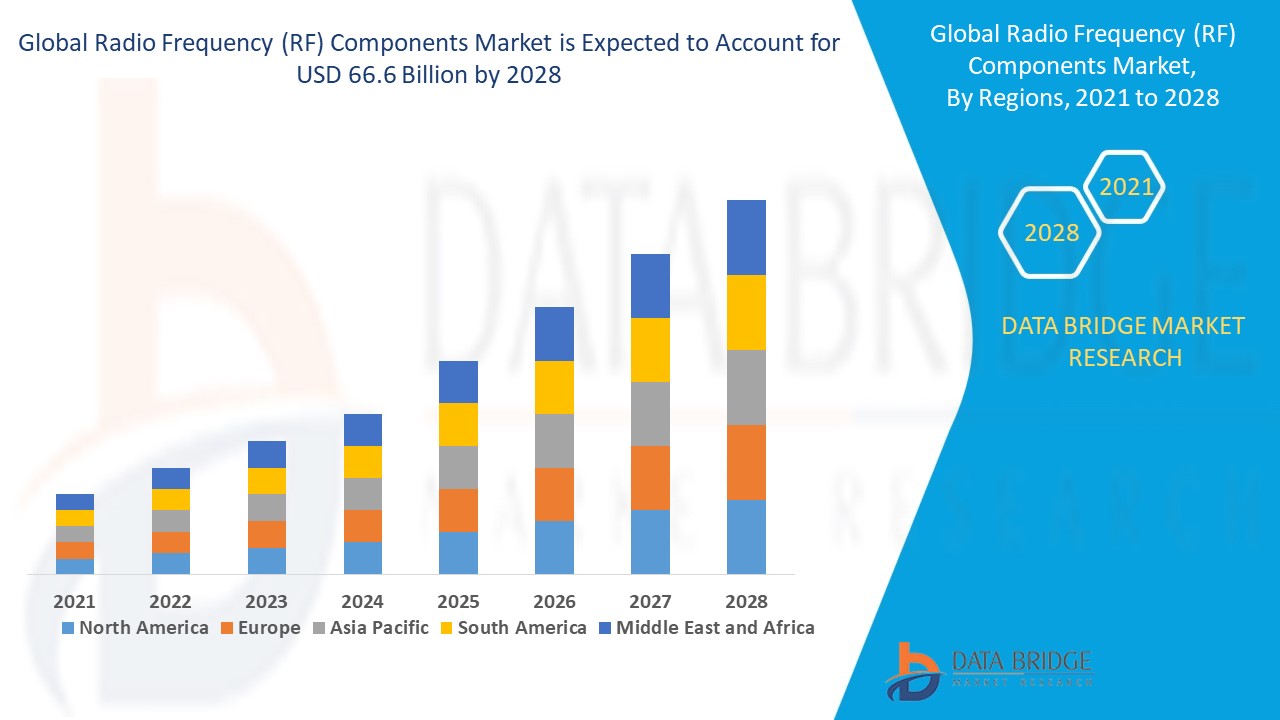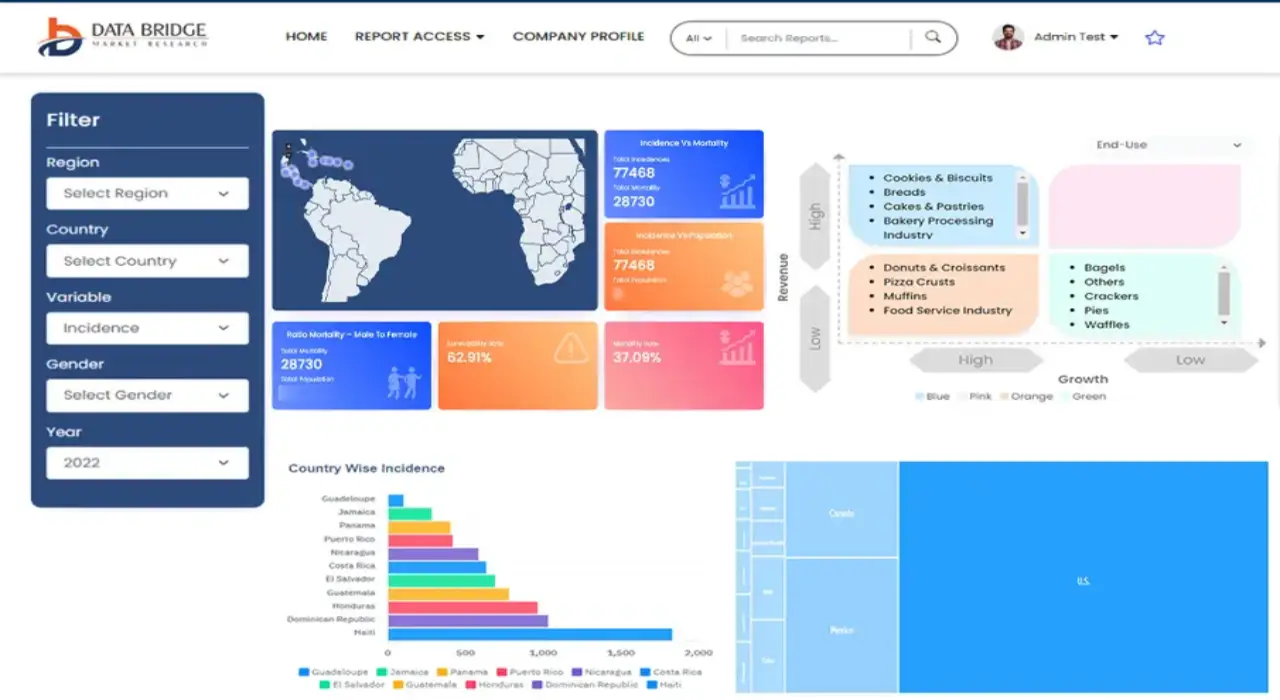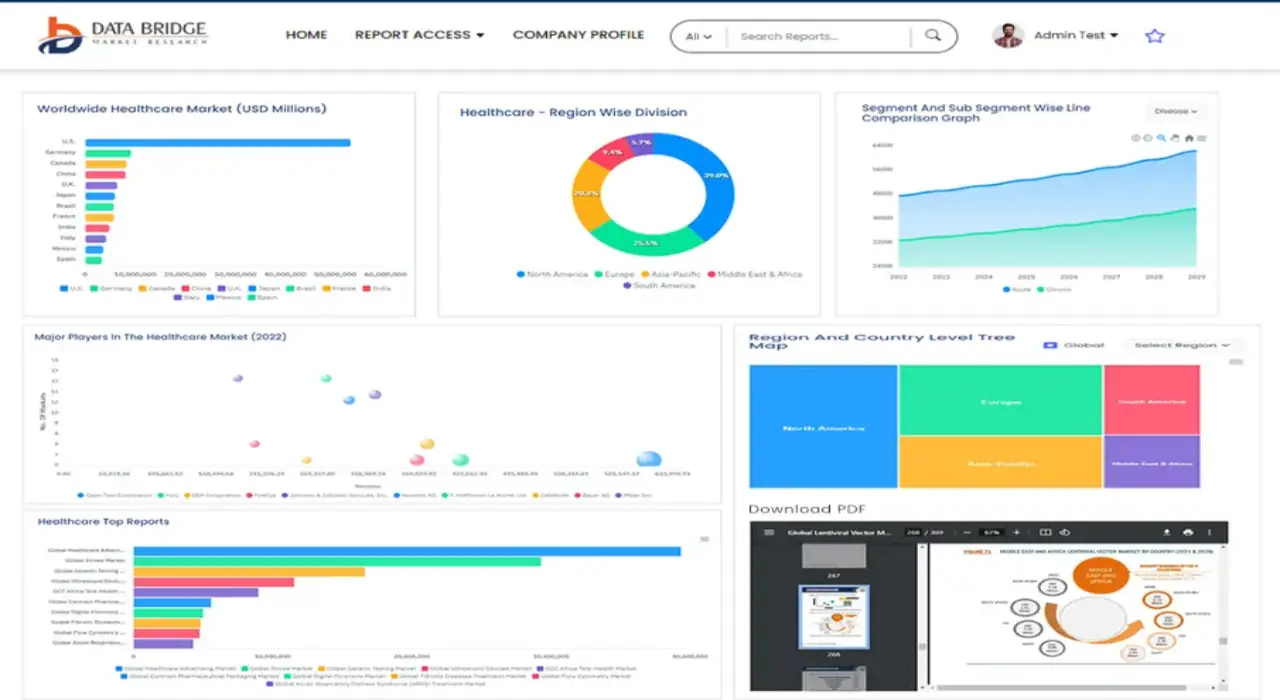>Global Radio Frequency (RF) Components Market, By Components (Filters, Duplexer, Power Amplifiers, Antenna Switches, Modulators and Demodulators, Others), Tunability (Antenna Tuning, Power Amplifiers Tuning, Filter/Duplexers Tuning), Modules (TX Module, RX Module, Antenna Switch Module, Duplexer + PA Module, Multi Duplexer Module, RX + Duplexer Module), Material (Silicon, Gallium Arsenide, Indium Phosphide, Nitride, Silicon-Germanium), Application (Cellular Phones, Tablets, E-Readers, GPS Devices, Notebooks, Smart TV’s, Set Top Boxes), End User (Consumer Electronics, Automotive, Wireless Communication, Military), Country (U.S., Canada, Mexico, Brazil, Argentina, Rest of South America, Germany, Italy, U.K., France, Spain, Netherlands, Belgium, Switzerland, Turkey, Russia, Rest of Europe, Japan, China, India, South Korea, Australia, Singapore, Malaysia, Thailand, Indonesia, Philippines, Rest of Asia-Pacific, Saudi Arabia, U.A.E, South Africa, Egypt, Israel, Rest of Middle East and Africa) Industry Trends and Forecast to 2028
 Market Analysis and Insights : Global Radio Frequency (RF) Components Market
Market Analysis and Insights : Global Radio Frequency (RF) Components Market
The radio frequency (RF) components market size is valued at USD 66.6 billion by 2028 is expected to grow at a compound annual growth rate of 15.65% in the forecast period of 2021 to 2028. Data Bridge Market Research report on radio frequency (RF) components provides analysis and insights regarding the various factors expected to be prevalent throughout the forecasted period while providing their impacts on the market’s growth.
Radio frequency components are the type of fundamental components which are required by any communication device for its proper functioning. They subordinate the cost of component manufacturing as they unite digital and analog electronics into a single chip.
The introduction on new materials to be compatible with all types of devices is expected to influence the growth of radio frequency (RF) components market over the forecast period of 2021 to 2028. Also the expansion of new technology is also anticipated to flourish the growth of the radio frequency (RF) components market. Furthermore, the high end requirement in communication devices and rise in penetration of smartphones, smartwatch, tablets and drones are also likely to positively impact the growth of the radio frequency (RF) components market. Moreover, the rise in popularity of wireless connections and internet along with increase in the number of government regulations in favor of RF components are also expected create a huge demand for radio frequency (RF) components as well as lifting the growth of the radio frequency (RF) components market.
However, the high price of raw materials and high cost of initial investments by vendors are expected to act as the major limitations for the growth of radio frequency (RF) components in the above mentioned forecasted period, whereas the stiff competition from established competitors can challenge the radio frequency (RF) components market growth in the forecast period of 2021 to 2028.
Likewise, the rapid technological transitions and rapid rise in the developments in the universal mobile telecommunication network such as 3G and 4G are expected to create various new opportunities that will lead to the growth of the radio frequency (RF) components market in the above mentioned forecasted period.
This radio frequency (RF) components market report provides details of new recent developments, trade regulations, import export analysis, production analysis, value chain optimization, market share, impact of domestic and localized market players, analyses opportunities in terms of emerging revenue pockets, changes in market regulations, strategic market growth analysis, market size, category market growths, application niches and dominance, product approvals, product launches, geographic expansions, technological innovations in the market. To gain more info on the radio frequency (RF) components market contact Data Bridge Market Research for an Analyst Brief, our team will help you take an informed market decision to achieve market growth.
Global Radio Frequency (RF) Components Market Scope and Market Size
The radio frequency (RF) components market is segmented on the basis of component, tunability, modules, material, application and end user. The growth among segments helps you analyze niche pockets of growth and strategies to approach the market and determine your core application areas and the difference in your target markets.
- On the basis of component, the radio frequency (RF) components market is segmented into filters, duplexer, power amplifiers, antenna switches, modulators and demodulators and others. Antenna switches have further been segmented into gallium arsenide (GAAS) HBT switches, high resistive-silicon on insulator (HR-SOI) switches and silicon on sapphire (SOS) switches.
- On the basis of tunability, the radio frequency (RF) components market is segmented into antenna tuning, power amplifiers tuning and filter/duplexers tuning.
- Based on modules, the radio frequency (RF) components market is segmented into TX Module, RX module, antenna switch module, duplexer + PA module, multi duplexer module and RX + duplexer module.
- On the basis of material, the radio frequency (RF) components market is segmented into silicon, gallium arsenide, indium phosphide, nitride and silicon-germanium.
- Based on application, the radio frequency (RF) components market is segmented into cellular phones, tablets, e-readers, GPS devices, notebooks, smart TV’S and set top boxes. Cellular phones have further been segmented into feature phones and smart phones.
- The end user segment of the radio frequency (RF) components market is segmented into consumer electronics, automotive, wireless communication and military. Consumer electronics have further been segmented into mobile phones, tablets, smart TVs and set-top boxes and laptops and notebooks.
Radio Frequency (RF) Components Market Country Level Analysis
The radio frequency (RF) components market is analyzed and market size, volume information is provided by country, component, tunability, modules, material, application and end user as referenced above.
The countries covered in the radio frequency (RF) components market report are U.S., Canada and Mexico in North America, Brazil, Argentina and Rest of South America as part of South America, Germany, Italy, U.K., France, Spain, Netherlands, Belgium, Switzerland, Turkey, Russia, Rest of Europe in Europe, Japan, China, India, South Korea, Australia, Singapore, Malaysia, Thailand, Indonesia, Philippines, Rest of Asia-Pacific (APAC) in the Asia-Pacific (APAC), Saudi Arabia, U.A.E, South Africa, Egypt, Israel, Rest of Middle East and Africa (MEA)as a part of Middle East and Africa (MEA).
North America leads the radio frequency (RF) components market because of the high adoption of advanced technologies and a well-established telecommunication sector. Asia-Pacific is expected to expand at a significant growth rate of over the forecast period of 2021 to 2028 owing to the increase in the adoption of consumer electronics with connectivity features.
The country section of the report also provides individual market impacting factors and changes in regulation in the market domestically that impacts the current and future trends of the market. Data points like down-stream and upstream value chain analysis, technical trends and porter's five forces analysis, case studies are some of the pointers used to forecast the market scenario for individual countries. Also, the presence and availability of global brands and their challenges faced due to large or scarce competition from local and domestic brands, impact of domestic tariffs and trade routes are considered while providing forecast analysis of the country data.
Competitive Landscape and Radio Frequency (RF) Components Market Share Analysis
The radio frequency (RF) components market competitive landscape provides details by competitor. Details included are company overview, company financials, revenue generated, market potential, investment in research and development, new market initiatives, regional presence, company strengths and weaknesses, product launch, product width and breadth, application dominance. The above data points provided are only related to the companies’ focus related to radio frequency (RF) components market.
The major players covered in the radio frequency (RF) components market report are AIXTRON, NXP Semiconductors, Broadcom, Skyworks Solutions, Inc., Texas Instruments Incorporated, STMicroelectronics, Renesas Electronics Corporation, Mitsubishi Electric Corporation, WIN Semiconductors, Seiko Epson Corporation, TEKTRONIX, INC., Microsemi, Qorvo, Inc, Murata Manufacturing Co., Ltd., TDK Corporation, FUJITSU, ROHM CO., LTD., Cree, Inc., TOSHIBA ELECTRONIC DEVICES & STORAGE CORPORATION, and Silicon Laboratories among other domestic and global players. Market share data is available for global, North America, Europe, Asia-Pacific (APAC), Middle East and Africa (MEA) and South America separately. DBMR analysts understand competitive strengths and provide competitive analysis for each competitor separately.
SKU-
Get online access to the report on the World's First Market Intelligence Cloud
- Интерактивная панель анализа данных
- Панель анализа компании для возможностей с высоким потенциалом роста
- Доступ аналитика-исследователя для настройки и запросов
- Анализ конкурентов с помощью интерактивной панели
- Последние новости, обновления и анализ тенденций
- Используйте возможности сравнительного анализа для комплексного отслеживания конкурентов
Методология исследования
Сбор данных и анализ базового года выполняются с использованием модулей сбора данных с большими размерами выборки. Этап включает получение рыночной информации или связанных данных из различных источников и стратегий. Он включает изучение и планирование всех данных, полученных из прошлого заранее. Он также охватывает изучение несоответствий информации, наблюдаемых в различных источниках информации. Рыночные данные анализируются и оцениваются с использованием статистических и последовательных моделей рынка. Кроме того, анализ доли рынка и анализ ключевых тенденций являются основными факторами успеха в отчете о рынке. Чтобы узнать больше, пожалуйста, запросите звонок аналитика или оставьте свой запрос.
Ключевой методологией исследования, используемой исследовательской группой DBMR, является триангуляция данных, которая включает в себя интеллектуальный анализ данных, анализ влияния переменных данных на рынок и первичную (отраслевую экспертную) проверку. Модели данных включают сетку позиционирования поставщиков, анализ временной линии рынка, обзор рынка и руководство, сетку позиционирования компании, патентный анализ, анализ цен, анализ доли рынка компании, стандарты измерения, глобальный и региональный анализ и анализ доли поставщика. Чтобы узнать больше о методологии исследования, отправьте запрос, чтобы поговорить с нашими отраслевыми экспертами.
Доступна настройка
Data Bridge Market Research является лидером в области передовых формативных исследований. Мы гордимся тем, что предоставляем нашим существующим и новым клиентам данные и анализ, которые соответствуют и подходят их целям. Отчет можно настроить, включив в него анализ ценовых тенденций целевых брендов, понимание рынка для дополнительных стран (запросите список стран), данные о результатах клинических испытаний, обзор литературы, обновленный анализ рынка и продуктовой базы. Анализ рынка целевых конкурентов можно проанализировать от анализа на основе технологий до стратегий портфеля рынка. Мы можем добавить столько конкурентов, о которых вам нужны данные в нужном вам формате и стиле данных. Наша команда аналитиков также может предоставить вам данные в сырых файлах Excel, сводных таблицах (книга фактов) или помочь вам в создании презентаций из наборов данных, доступных в отчете.














